Kang Yin
Reconstructing Unseen Sentences from Speech-related Biosignals for Open-vocabulary Neural Communication
Oct 31, 2025Abstract:Brain-to-speech (BTS) systems represent a groundbreaking approach to human communication by enabling the direct transformation of neural activity into linguistic expressions. While recent non-invasive BTS studies have largely focused on decoding predefined words or sentences, achieving open-vocabulary neural communication comparable to natural human interaction requires decoding unconstrained speech. Additionally, effectively integrating diverse signals derived from speech is crucial for developing personalized and adaptive neural communication and rehabilitation solutions for patients. This study investigates the potential of speech synthesis for previously unseen sentences across various speech modes by leveraging phoneme-level information extracted from high-density electroencephalography (EEG) signals, both independently and in conjunction with electromyography (EMG) signals. Furthermore, we examine the properties affecting phoneme decoding accuracy during sentence reconstruction and offer neurophysiological insights to further enhance EEG decoding for more effective neural communication solutions. Our findings underscore the feasibility of biosignal-based sentence-level speech synthesis for reconstructing unseen sentences, highlighting a significant step toward developing open-vocabulary neural communication systems adapted to diverse patient needs and conditions. Additionally, this study provides meaningful insights into the development of communication and rehabilitation solutions utilizing EEG-based decoding technologies.
Kling-Foley: Multimodal Diffusion Transformer for High-Quality Video-to-Audio Generation
Jun 24, 2025Abstract:We propose Kling-Foley, a large-scale multimodal Video-to-Audio generation model that synthesizes high-quality audio synchronized with video content. In Kling-Foley, we introduce multimodal diffusion transformers to model the interactions between video, audio, and text modalities, and combine it with a visual semantic representation module and an audio-visual synchronization module to enhance alignment capabilities. Specifically, these modules align video conditions with latent audio elements at the frame level, thereby improving semantic alignment and audio-visual synchronization. Together with text conditions, this integrated approach enables precise generation of video-matching sound effects. In addition, we propose a universal latent audio codec that can achieve high-quality modeling in various scenarios such as sound effects, speech, singing, and music. We employ a stereo rendering method that imbues synthesized audio with a spatial presence. At the same time, in order to make up for the incomplete types and annotations of the open-source benchmark, we also open-source an industrial-level benchmark Kling-Audio-Eval. Our experiments show that Kling-Foley trained with the flow matching objective achieves new audio-visual SOTA performance among public models in terms of distribution matching, semantic alignment, temporal alignment and audio quality.
EEG-based Multimodal Representation Learning for Emotion Recognition
Oct 29, 2024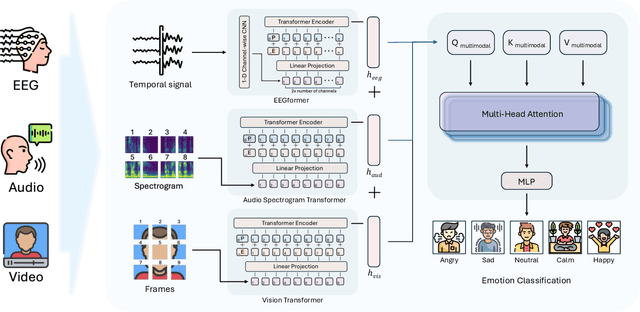
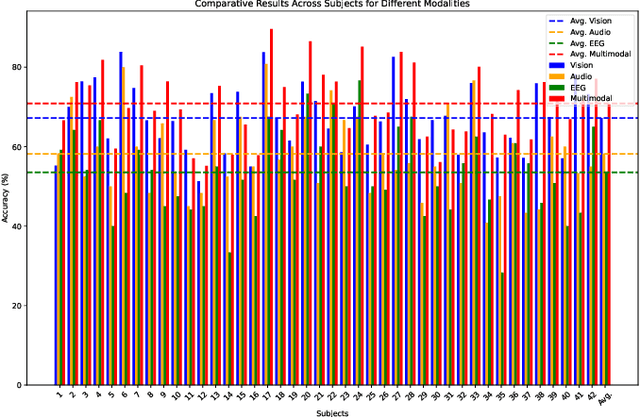
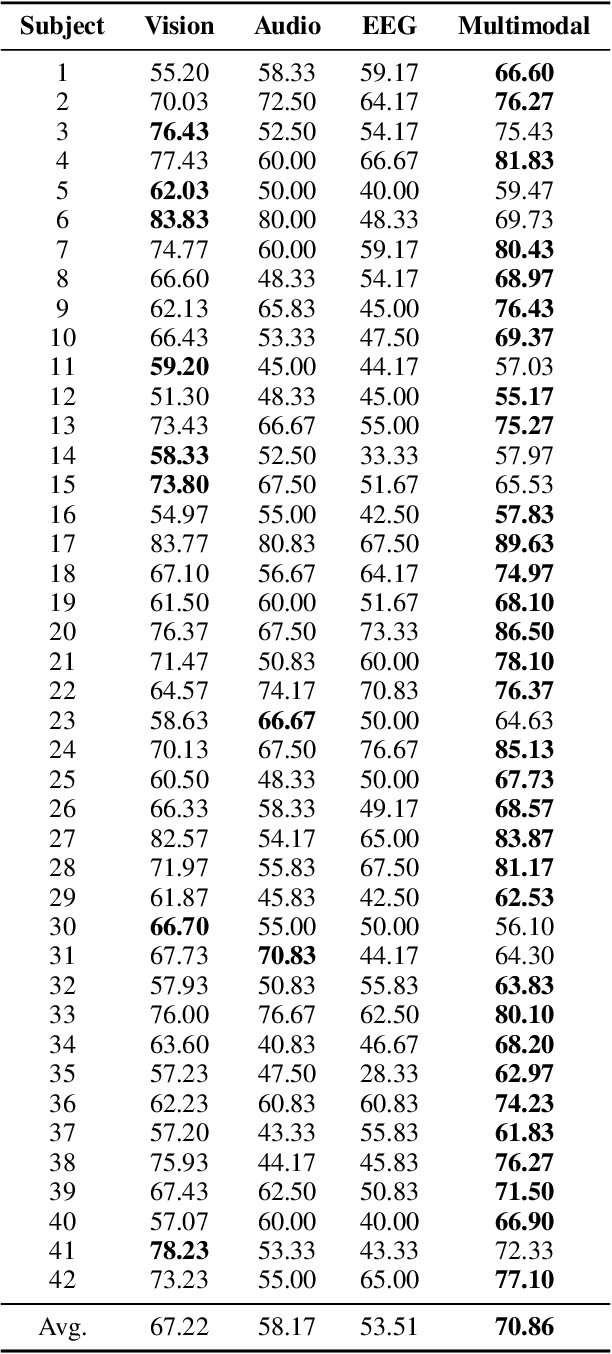
Abstract:Multimodal learning has been a popular area of research, yet integrating electroencephalogram (EEG) data poses unique challenges due to its inherent variability and limited availability. In this paper, we introduce a novel multimodal framework that accommodates not only conventional modalities such as video, images, and audio, but also incorporates EEG data. Our framework is designed to flexibly handle varying input sizes, while dynamically adjusting attention to account for feature importance across modalities. We evaluate our approach on a recently introduced emotion recognition dataset that combines data from three modalities, making it an ideal testbed for multimodal learning. The experimental results provide a benchmark for the dataset and demonstrate the effectiveness of the proposed framework. This work highlights the potential of integrating EEG into multimodal systems, paving the way for more robust and comprehensive applications in emotion recognition and beyond.
Sparse Multitask Learning for Efficient Neural Representation of Motor Imagery and Execution
Dec 10, 2023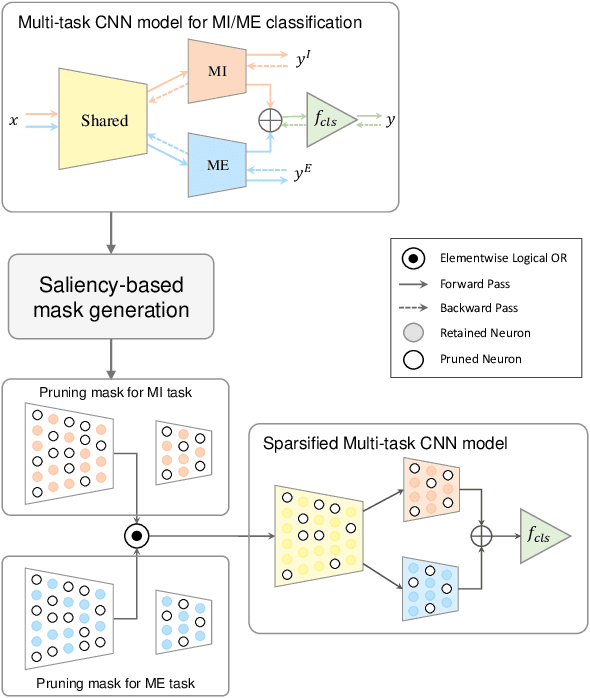
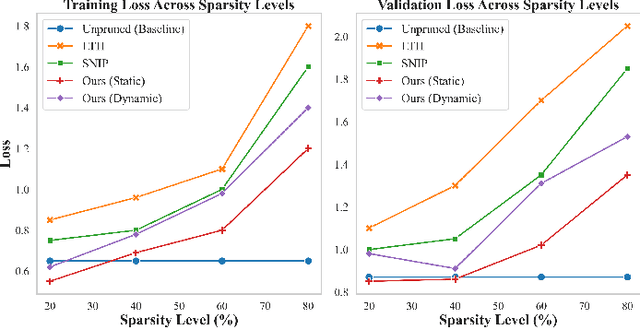
Abstract:In the quest for efficient neural network models for neural data interpretation and user intent classification in brain-computer interfaces (BCIs), learning meaningful sparse representations of the underlying neural subspaces is crucial. The present study introduces a sparse multitask learning framework for motor imagery (MI) and motor execution (ME) tasks, inspired by the natural partitioning of associated neural subspaces observed in the human brain. Given a dual-task CNN model for MI-ME classification, we apply a saliency-based sparsification approach to prune superfluous connections and reinforce those that show high importance in both tasks. Through our approach, we seek to elucidate the distinct and common neural ensembles associated with each task, employing principled sparsification techniques to eliminate redundant connections and boost the fidelity of neural signal decoding. Our results indicate that this tailored sparsity can mitigate the overfitting problem and improve the test performance with small amount of data, suggesting a viable path forward for computationally efficient and robust BCI systems.
SHARK: A Lightweight Model Compression Approach for Large-scale Recommender Systems
Aug 18, 2023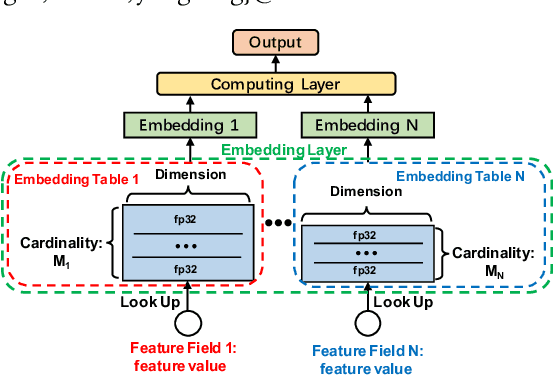


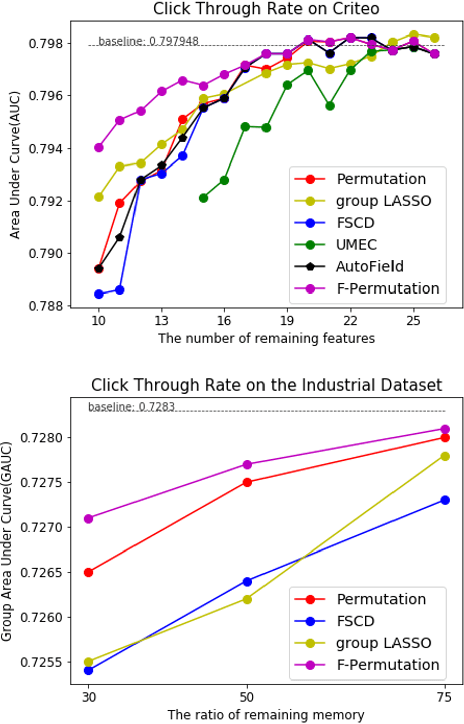
Abstract:Increasing the size of embedding layers has shown to be effective in improving the performance of recommendation models, yet gradually causing their sizes to exceed terabytes in industrial recommender systems, and hence the increase of computing and storage costs. To save resources while maintaining model performances, we propose SHARK, the model compression practice we have summarized in the recommender system of industrial scenarios. SHARK consists of two main components. First, we use the novel first-order component of Taylor expansion as importance scores to prune the number of embedding tables (feature fields). Second, we introduce a new row-wise quantization method to apply different quantization strategies to each embedding. We conduct extensive experiments on both public and industrial datasets, demonstrating that each component of our proposed SHARK framework outperforms previous approaches. We conduct A/B tests in multiple models on Kuaishou, such as short video, e-commerce, and advertising recommendation models. The results of the online A/B test showed SHARK can effectively reduce the memory footprint of the embedded layer. For the short-video scenarios, the compressed model without any performance drop significantly saves 70% storage and thousands of machines, improves 30\% queries per second (QPS), and has been deployed to serve hundreds of millions of users and process tens of billions of requests every day.
Target-centered Subject Transfer Framework for EEG Data Augmentation
Nov 24, 2022Abstract:Data augmentation approaches are widely explored for the enhancement of decoding electroencephalogram signals. In subject-independent brain-computer interface system, domain adaption and generalization are utilized to shift source subjects' data distribution to match the target subject as an augmentation. However, previous works either introduce noises (e.g., by noise addition or generation with random noises) or modify target data, thus, cannot well depict the target data distribution and hinder further analysis. In this paper, we propose a target-centered subject transfer framework as a data augmentation approach. A subset of source data is first constructed to maximize the source-target relevance. Then, the generative model is applied to transfer the data to target domain. The proposed framework enriches the explainability of target domain by adding extra real data, instead of noises. It shows superior performance compared with other data augmentation methods. Extensive experiments are conducted to verify the effectiveness and robustness of our approach as a prosperous tool for further research.
WiFi-based Multi-task Sensing
Nov 26, 2021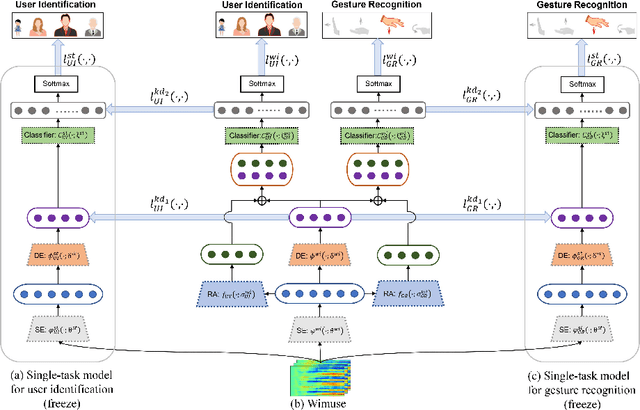
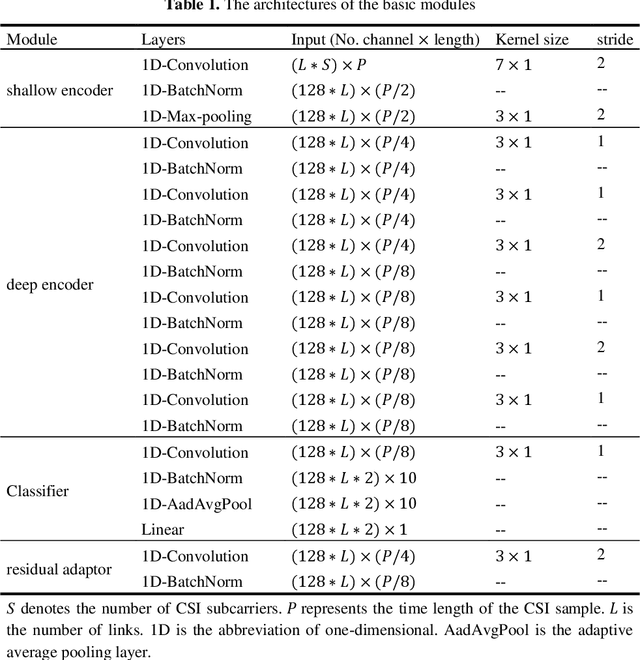
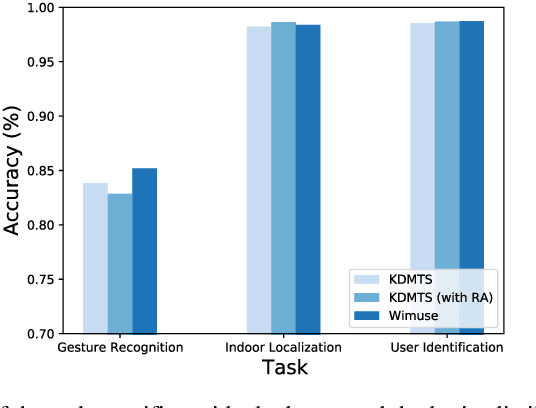
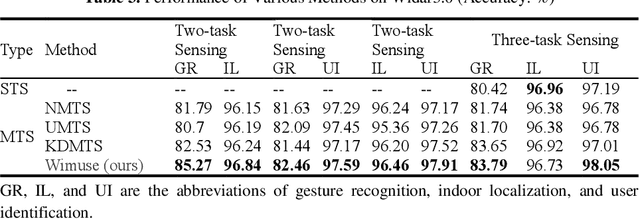
Abstract:WiFi-based sensing has aroused immense attention over recent years. The rationale is that the signal fluctuations caused by humans carry the information of human behavior which can be extracted from the channel state information of WiFi. Still, the prior studies mainly focus on single-task sensing (STS), e.g., gesture recognition, indoor localization, user identification. Since the fluctuations caused by gestures are highly coupling with body features and the user's location, we propose a WiFi-based multi-task sensing model (Wimuse) to perform gesture recognition, indoor localization, and user identification tasks simultaneously. However, these tasks have different difficulty levels (i.e., imbalance issue) and need task-specific information (i.e., discrepancy issue). To address these issues, the knowledge distillation technique and task-specific residual adaptor are adopted in Wimuse. We first train the STS model for each task. Then, for solving the imbalance issue, the extracted common feature in Wimuse is encouraged to get close to the counterpart features of the STS models. Further, for each task, a task-specific residual adaptor is applied to extract the task-specific compensation feature which is fused with the common feature to address the discrepancy issue. We conduct comprehensive experiments on three public datasets and evaluation suggests that Wimuse achieves state-of-the-art performance with the average accuracy of 85.20%, 98.39%, and 98.725% on the joint task of gesture recognition, indoor localization, and user identification, respectively.
 Add to Chrome
Add to Chrome Add to Firefox
Add to Firefox Add to Edge
Add to Edge